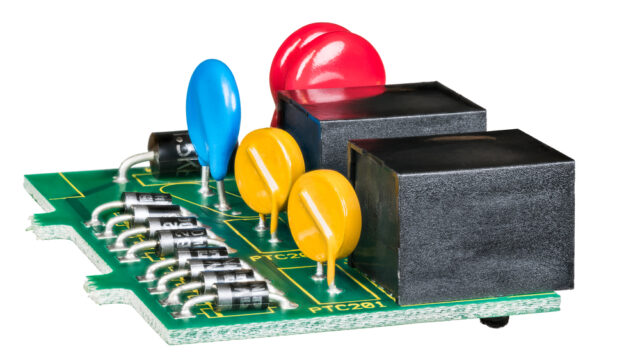
Video surveillance protection from 3 types of overvoltages
Video surveillance protection from 3 types of overvoltages
The video surveillance system is constantly exposed to adverse factors. And in the first place of those is the impact of the environment and voltage drops. At the same time, video surveillance is installed where reliability should be maximum, and the likelihood of system shutdown or failure is minimized. In this article, we will talk about the protection of video surveillance from the effects of overvoltages.
What elements of the system need to be protected?
Of course, the entire system must be fully protected. But more attention should be paid to cables. They take all the shock in the event of an overvoltage.
Therefore, the maximum protection should be on communication lines, power supply, grounding, and other wires.
3 types of overvoltages
Overvoltage is a short-term but extremely high voltage in the system, lasting no more than one millisecond. This problem may arise due to:
What elements of the system need to be protected?
- lightning and electrostatic discharge;
- system switching;
- used equipment.
If the last reason can be protected only by timely prevention and system change, the first two require more serious methods.
Lightning overvoltage
The thunderstorm is unpredictable. When lightning strikes, an ionized stream appears in the air, along which the discharge sweeps down to the ground. Thunderstorm electricity can carry 50 million volts. No device can withstand such a voltage.
And even if you have a lightning rod, it will not be 100% surge protection. Even lightning protection does not prevent lightning strikes but protects equipment from overvoltage.
Consequences of commutation and switching
Overvoltage can occur as a result of switching devices to electrical networks or when turning on the switch. If there is no special surge protection device, then the system will be at risk. It is possible to destroy cameras, recorders, ports, and other equipment connected to the cables.
Electrostatic charge from atmospheric phenomena
Precipitation can carry electrostatic discharges. And in case of contact with the cable, it can lead to millisecond overvoltage in the system.
A basic principle of protection
Surge protection devices (SPDs) are multistage. This is necessary to increase the percentage of fault tolerance, and several levels of protection help to smooth out impulses completely.
- The principle of operation is as follows:
- the gas discharge device is triggered first. It diverts part of the voltage to the ground;
- if the discharge level is still high after that, the second level of protection helps. This device works based on limiting diodes and Zener diodes;
- if necessary, the third level of protection will work; the principle of operation is similar to the previous one.
Such a system can neutralize the voltage and keep the system in a working condition without disturbances.
Important! After the protection system is triggered, it is recommended to carry out video surveillance prevention measures. A technician will tell you for sure if the system is damaged.
Conclusion
For video surveillance to work for a long time, it is not enough to purchase high-quality equipment. Installation of SPDs is required on all electrical circuits. This will allow the system to withstand any voltage drop, even the largest.













